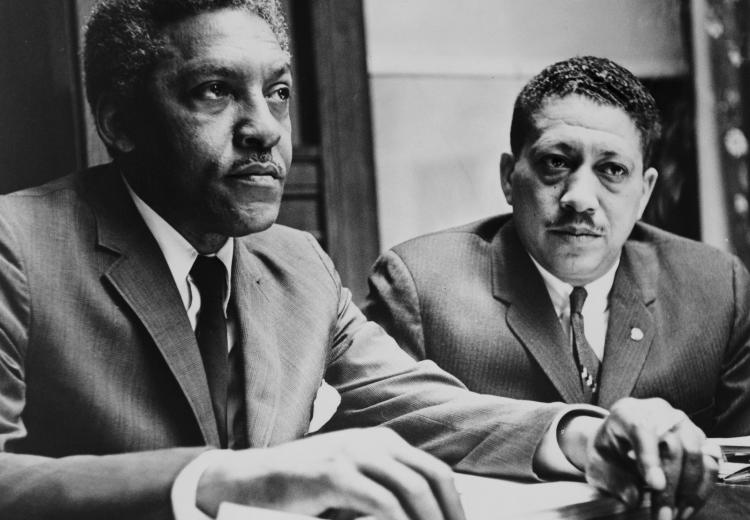Civil Rights and the Cold War

Bayard Rustin and Dr. Eugene Reed are interviewed about the Vietnam War at Freedom House. Photo by Al Ravenna.
"Racial discrimination furnishes grist for the Communist propaganda mills, and it raises doubts even among friendly nations as to the intensity of our devotion to the democratic faith."
—United States Amicus Curiae Brief, Brown v. Board of Education of Topeka (1954)
Textbooks often present history as conveniently divided by eras, movements, or themes; one follows another, trends begin and end, and they are more or less self-contained. In the high-school American history class, for example, we often look at the Cold War and civil rights movement as discrete entities, whose separate conflicts involved figures largely unrelated by circumstance. In fact, this could not be further from the truth!
Presidents Truman, Eisenhower, Kennedy, and Johnson juggled their domestic and international responsibilities; the Supreme Court considered Soviet “propaganda mills” when deciding the case of Brown v. Board; and segregationist rhetoric often equated support for desegregation with the advocacy of communism.
This lesson plan attempts to dissolve the artificial boundary between domestic and international affairs in the postwar period to show students how we choose to discuss history. Students will examine a variety of primary source documents used inside the United States and abroad during the Cold War and the concurrent civil rights movement. The goal is to see how these documents can be used as evidence for both Cold War and civil rights issues in several different ways.
Guiding Questions
To what extent did individuals and institutions concerned with civil rights and the Cold War intersect?
To what extent were the goals of the civil rights movement and the Cold War complementary?
Learning Objectives
Analyze point of view and possible motives for the statements and perspectives represented.
Evaluate the extent to which the policies adopted during the civil rights movement and the Cold War were mutually beneficial.
Evaluate the legacy of policies and individuals involved in the civil rights movement and the Cold War.
